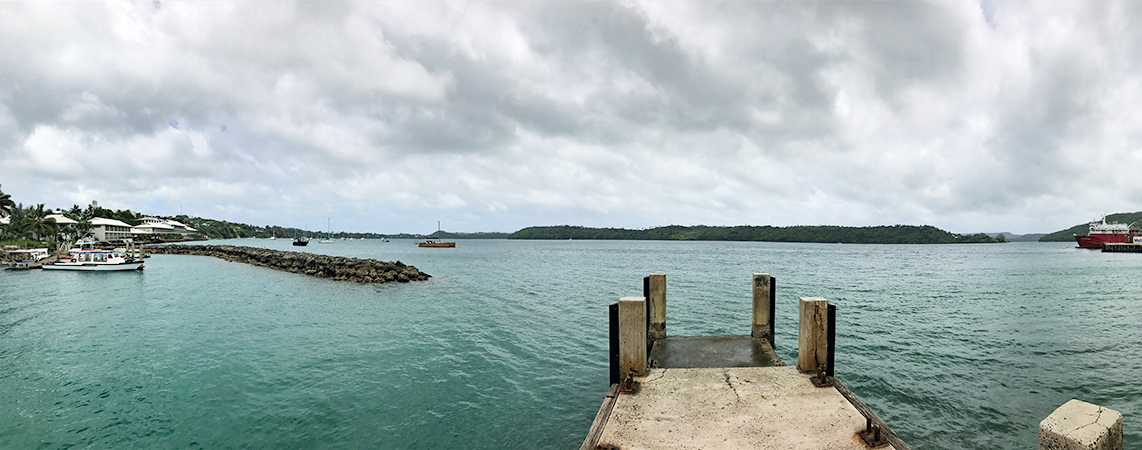
Photo:
For western South-Pacific islands including Tonga, climate change is expected to bring more heavy rainfall events and severe tropical cyclones and extreme sea level events, which will require adaptation for people, infrastructure and coastal ecosystems.
Currently, changes in rainfall patterns have resulted in almost-annual flood events that damage major assets and threaten livelihoods. Categories 4 and 5 tropical cyclones are increasing as a proportion of all cyclones and are severely impacting infrastructure. Rising sea levels will continue to drive an increase in the frequency of coastal inundation with the small island developing state facing a potential long-term threat from permanent inundation in coastal zones and across low-lying islands, as well as wave-driven flooding. Some studies have suggested significant displacement of communities.
In combination with potential tectonic disturbances and cyclone activity, the risk to Tonga’s communities of coastal submergence and wave inundation is among the highest in the world.
Implemented by UNDP and the Government of Tonga, this 7-year project (2025-2032) aims to build the long-term resilience of vulnerable coastal communities to the direct impacts of climate change and build transformative adaptation capacities through strategic infrastructure work, long-term climate risk informed adaptation planning, and engagement on long-term adaptation solutions.
The approach involves three interrelated outputs addressing key policy/regulatory, institutional and implementation/resourcing issues. Notably, the project will adopt a participatory, bottom-up development planning approach (including community development plans, district plans and island strategic plans) to link development and spatial planning / land use management.
- Community
- District
- National
- National Governments
- Non-Governmental Organizations
- United Nations Development Programme (UNDP)
3,608 direct beneficiaries (1,804 women) and 96,571 indirect beneficiaries (48,289 women)
- United Nations Development Programme (UNDP)
- Green Climate Fund
- Ministry of Environment and Climate Change, Government of Tonga
Expected outcomes
Output 1: Strengthened knowledge, capacity and engagement for incorporating climate risks into long-term adaptation planning supported through a multi-sectoral, multi-stakeholder engagement and dialogue platform
Output 2: Strengthened national and local capacities for effective monitoring and assessment of climate risks
Output 3 Reduced vulnerabilities of coastal communities in Hahake to climate hazards through coastal protection measures
- Image

- Image

- Image

In the face of sea level rise, Tonga’s largest and most populated island of Tongatapu (home to around 74% of the population, or around 74,320 people) faces significant frequent flooding risks.
There is already clear evidence of the impacts of local sea level rise on the island, and the permanent losses under a 0.5m SLR scenario are expected to be 6%, and under a 1.0m SLR scenario to be 25%.
By the 2090s, sea level rise is estimated at around 59.5 cm increase using historical records only, or within the range of 40 cm–87 cm under RCP8.5. By 2150 seal level rise in Tonga is likely to have risen by 1.37 meters and up to 2m (under SSP3-7.0), and by up to 1m already by 2100.
With most of Tongatapu’s most populated areas of the north and northeast coasts at only 1m above sea level, many settlements face being inundated in the absence of adequate adaptation strategies. At the same time, geographic isolation and economic vulnerabilities, including dependence on remittance and foreign aid, increase the challenges faced by communities and decision-makers and compound climate change risks.
With finance from the Green Climate Fund, this project seeks to address coastal inundation in critical areas through immediate coastal protection measures in the northeastern parts of Tongatapu, while fostering long term adaptation measures through the provision of critical climate risk information and planning tools supported through key training, knowledge sharing and capacity.
The project proposes a transformative adaptation approach through the establishment and support for multi-stakeholder decision making on critical adaptation needs and land use planning.
The overall objective is to support the transformative adaptation agenda setting through a participatory process; supporting development and spatial planning (community development plans, district plans and island strategic plans) to consider climate risks and promote appropriate and transformative adaptation options. These are to be achieved through three interrelated key outputs.
Output 1: Strengthened knowledge, capacity and engagement for incorporating climate risks into long-term adaptation planning supported through a multi-sectoral, multi-stakeholder engagement and dialogue platform
Activity 1.1. Establish a national multi-stakeholder engagement platform for dialogue on co-creating long-term climate change adaptation strategies and solutions including voluntary retreat.
Activity 1.2 Develop village and district level participatory climate risk informed plans
Activity 1.3 Build the capacity of local government, village committees and NGOs to integrate climate risks and adaptation needs into community level planning, and inform future Community Development Plans (CDP)
Output 2: Strengthened national and local capacities for effective monitoring and assessment of climate risks
Activity 2.1 Strengthened mechanism for collecting and analysing data and information for better-informed climate risk monitoring and coastal adaptation planning
Activity 2.2 Improve the knowledge base of multi-sectoral, multi-stakeholders on adaptation planning strategies for long-term resilient planning and transformative adaptation for Tonga based on climate risks and projections
Output 3 Reduced vulnerabilities of coastal communities in Hahake to climate hazards through coastal protection measures
Activity 3.1. Coastal protection measures built along 4.3km of coastline in Hahake
Activity 3.2 Sharing of lessons learned and best practices in climate resilient coastal protection measures for scale-up at the national and regional level
Aishath Azza, Regional Technical Specialist – Climate Change Adaptation, UNDP aishath.azza@undp.org




